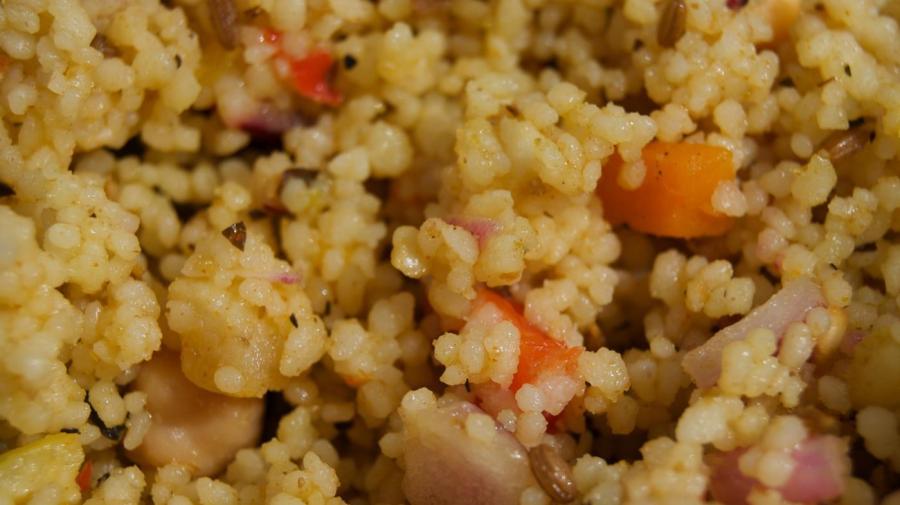What Is the Difference Between Farina and Semolina?

Durum semolina is a purified milling of hard wheat used in making pasta, while consumers use soft wheat semolina, known as farina, as a hot breakfast cereal. With either product, the miller chooses the middlings of the grind by separating the kernel from the bran and the germ of the wheat.
Durum or other hard wheat produces yellow flour that is high in protein. This flour produces a dense, chewy texture when cooked. Cooks boil durum wheat into a pasty gnocchi or as the basis of dried products, including couscous or bulgur.
Farina is slightly off-white in color. Consumers know it as Cream of Wheat, a trade name in the United States. The grinding process results in a course, cornmeal like substance. Boiling farina produces a soft, mushy porridge. In North America and northwestern Europe, cooks boil farina in milk and sweeten it to produce semolina pudding. They often add vanilla flavoring and serve the dessert with jam.
Substituting hard wheat semolina for farina or farina for semolina generally does not produce desirable results. However, semolina works well as an alternative to cornmeal on a baking surface to reduce sticking. When making bread, bakers often use a small amount of durum semolina in the flour to improve the flavor of the bread crust.





